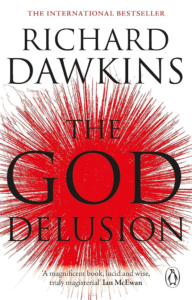The Habit Loop: Unlocking the Power of Automation in Our Lives

Cracking the Habit Code: How Routines Rule Our Lives
Charles Duhigg’s “The Power of Habit” isn’t just about self-improvement; it’s a deep dive into the science of why we do what we do. Duhigg reveals a powerful three-step cycle that explains a huge part of our daily actions. We will explore this concept, called the “Habit Loop,” and show how understanding it can help us control our behaviors and live better lives.
The Habit Loop: Trigger, Action, Reward
Duhigg’s key idea is the “Habit Loop.” This loop has three parts: trigger, action, and reward. The trigger is what starts the habit cycle, like a specific time of day or an emotion. Once triggered, our brain goes on autopilot, prompting the action, which is the actual habit behavior. Finally, the reward strengthens the loop. This reward can be a physical feeling (like enjoying a cigarette) or an emotional response (like the satisfaction of finishing a task). Over time, with repeated loops, the brain strengthens the connections between these parts, making the habit automatic.
From Cravings to Progress: Using the Habit Loop for Good
Understanding the “Habit Loop” isn’t just about mindless behaviors; it’s about making positive changes. Duhigg shows how individuals and organizations can use this concept to build good habits. The key is to identify the existing trigger-action-reward loops of unwanted habits and then change them strategically. For example, if you crave sugary snacks in the afternoon (trigger), you can swap the unhealthy snacking action (eating cookies) with a healthier option (fruit salad) while still getting the reward (feeling satisfied). Similarly, companies can use the “Habit Loop” to influence customer behavior by creating triggers that lead to desired actions (buying a new product) with built-in rewards (discounts or loyalty points).
Beyond You: The Habit Loop and Social Change
The power of the “Habit Loop” goes beyond personal development. Duhigg explores how ingrained habits in organizations and communities can trap people in negative cycles. He gives examples of how institutions have used the “Habit Loop” framework to break these cycles. For instance, a struggling hospital improved safety by focusing on the triggers that caused risky behavior among staff. By addressing those triggers and introducing new actions with positive rewards, the hospital saw a significant reduction in errors. This shows how the “Habit Loop” can be used to drive positive social change by tackling bad habits within institutions and communities.
Willpower: The Conscious Key to Breaking Habits
While the “Habit Loop” emphasizes the automatic nature of habits, Duhigg acknowledges the role of conscious choice. The key to changing habits, according to Duhigg, is to identify the existing loop and then “isolate the action and insert a new behavior.” This requires conscious effort to interrupt the established routine and introduce a new, desired behavior. However, the reward associated with the new behavior eventually strengthens the alternative loop, making the positive habit more automatic over time.
In conclusion, “The Power of Habit” offers a powerful way to understand and influence human behavior. By breaking down the “Habit Loop” into its parts, Duhigg empowers individuals and organizations to take control of their routines and create positive change. Whether it’s personal well-being, better productivity, or social progress, understanding the power of habits unlocks a way to shape our lives and the world around us.




















